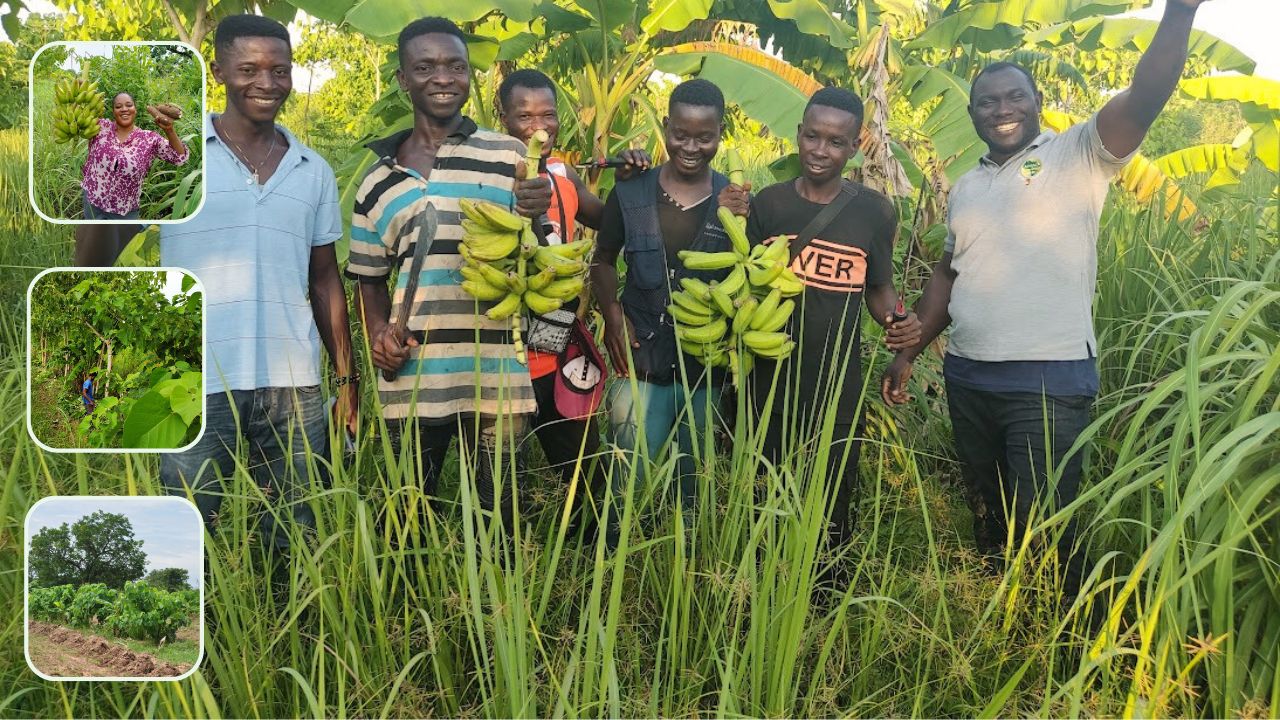What is syntropic agriculture?
More than just reforestation
Where there is hunger, reforestation is not the first priority for those who are hungry. That is why in Ghana we combine the creation of forests with the creation of food sources. What was initially intended to lead to acceptance among the local population is now a fully functioning resilient ecosystem:
- Trees, bushes and crops are interspersed - this structural richness protects the soil from erosion
- The water retention function is also strengthened by this type of planting and less irrigation is required
- Closed ecosystems are formed that are largely viable without human help
- The crops are available to local people as a source of food and for trade
- Syntropic forestry is more resilient to extreme weather phenomena than pure forests or farms

Reforestation and agriculture in one: Syntropic agroforestry
Soils can lose fertility due to monoculture, erosion or fallow land. The soil structure and nutrients are then suboptimal and often have difficulty binding water.
The improvement of soil structure and the prevention of erosion are major side effects of syntropic afforestation. Forests bind CO2 and also help the global climate through their positive effect on evaporation processes. Reforestation with trees binds and releases rain where it is urgently needed. But if the tree foliage is missing, the soil is defenceless against drying out and erosion.
Similar to permaculture, syntropic reforestation is used to create closed ecosystems that prevent soils from being depleted or drying out. The association of hedges and shrubs and useful plants of various sizes ensure year-round soil protection.
The crops also produce food that is used for food safety or can be sold on the market.
At Click A Tree, the harvest remains at the free disposal of the local people.
Fancy more details? You can read more here
Permaculture, agroforestry, syntropic reforestation …
Many names denote a basic idea: to imitate natural ecosystems that function well and are stable.
Plants are selected that complement each other in terms of their nutrient requirements, which increases the fertility of the soil – similar to crop rotation.
Diversity is the game changer here:
- Different plants (no monoculture!)
- Various growth rates
- Different growth heights
- Different root systems
Plants with different needs recycle nutrients directly and are more resilient to pests and weather extremes. Good soil structures are created that are a permanent home for soil organisms and microorganisms.
Syntropic reforestation creates food security
In the past, forests were cut down to create farmland. Food is required. When crops and forests are associated, forests and areas for growing food are created.
Unlike in arable farming, where the soil is regarded as a substrate for crops, in syntropic afforestation the soil is the basis of an ecosystem that is constantly rejuvenating itself and is not left depleted and fallow at some point, so that the next piece of forest has to be cleared for new farmland.
Syntropic agriculture is a type of reforestation that is sustainable. It is a piece of nature that is so directly useful to humans that it is not in danger. It promotes biodiversity, protects the climate and the environment and is profitable at the same time.